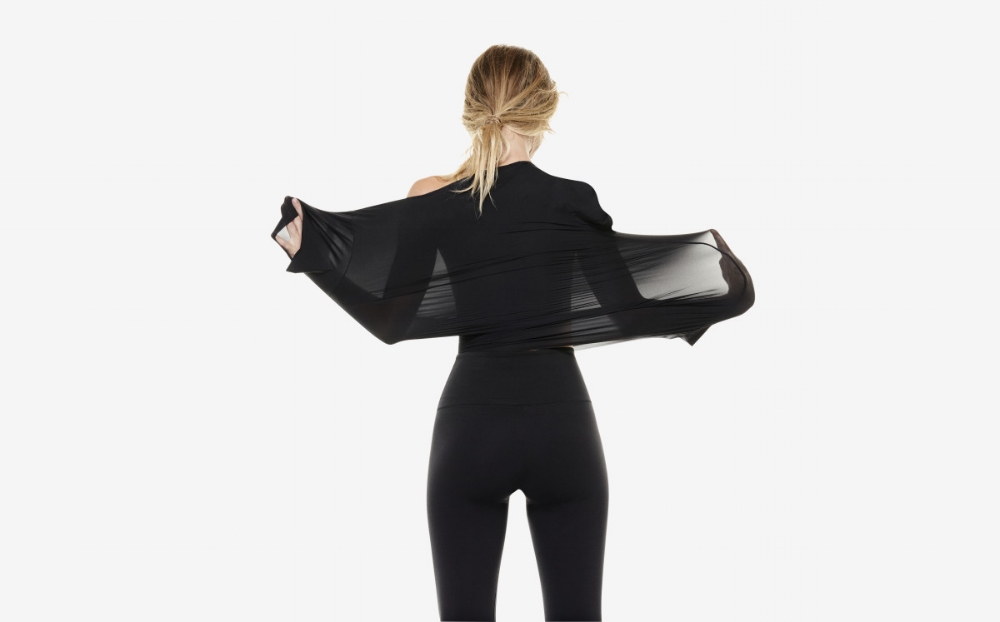Imagine for a moment that in order to purchase a pair of $300-plus pair of black workout leggings, you would have to sign up, get hand-approved by the brand’s founder, and then within one week of being granted access to the club (so to speak), make your selection and purchase. Not initially approved? Well, if you fit the bill of what the brand is looking for from its consumers, you will be added to a waiting list and should one of the coveted – but strictly limited – spots open up, you might be in luck.
Now forget that seemingly outlandish hypothetical … because it is a model that exists. It is how Wone (pronounced “won” or “one”) – the activewear brand founded early this year by former Nike director Kristin Hildebrand – actually works. And while it seems at odds with everything that is retail in 2018, people are, in fact, buying into it.
Portland-based Wone is – quite obviously – doing things differently than its peers in the crowded athletic-wear market. For one thing, the brand’s materials are a far cry from those used by your average brand. The complex French, Italian and other European textiles are ones that you are much more likely to find on Olympians and other top-of-the-line athletes, than on a Lululemon devotee. They are materials that Hildebrand says she pushed to use while in her role as Global Concept Creative Director at Nike, but at $20 per yard (versus the traditional $2.50 to $4 per yard), could not bring into fruition at scale because they were simply too expensive.
The barely one-year old direct-to-consumer startup – which Hildebrand is self-funding with her husband Ryan, the co-founder of San Francisco-based online business banking service, Seed – is also something of an outlier in terms of its advertising; the company barely does any little of that. And in terms of social media, while some 90-plus percent of brands are falling over themselves to work with influencers, Wone barely maintains an Instagram presence. “The brand is built on philosophical practices that don’t align with social media, making it impossible to use as a marketing platform,” Hildebrand told WhoWhatWear this spring.
Those core tenets include a dedication to slow fashion, thoughtful manufacturing, and sustainability. “By sticking to classic silhouettes that aren’t so of-the-moment, that brings you to a place of sustainability,” according to Hildebrand. Also of significant importance: abolishing the smoke and mirrors that are typically associated with brands’ supply chains. “I think the industry in general has a certain amount of dishonesty. In that, you’re not totally upfront about where your product is being produced and the treatments it is going through,” Hildebrand said in an interview with WWD.
But the most striking element of the Wone brand is it retail strategy. In a largely unstable market, in which many brands continue to heavily rely on discounting, collaborating, and careful marketing in order to cut through the noise and lure in consumers, Wone is forcing its potential buyers jump through hoops. In other words, it is making it difficult for the notoriously fickle and spoiled consumer to purchase its wares.
Not only does Wone limit its output by producing only 600 units of each of its few styles per season (it maintains a 2-season per annum calendar, and season 1 is sold out) and price its wares on the higher end of the spectrum ($150 for sports bras and $320 for leggings), it hand selects who can buy. “Hildebrand literally Googles every woman who requests access to the brand through her website,” Fast Co. revealed last week.
This enables Hildebrand to keep the brand’s consumer base “small and niche” and “get a better glimpse of a potential customer.” She says, “Our goal is to build personal relationships with our customers.” This tactic also “helps her weed out people who might be trying to rip off her designs or resell her limited-edition goods for more than the list price,” after all, the latter has become an industry all of its own when limited edition items hit the marketplace.
Hildebrand says her approach comes as a direct result of what she sees as larger problem with the market. “Everywhere I had been felt like there were pieces of the business model that were broken.” As for whether her approach – while undoubtedly different and relatively outlandish – could actually thrive in the current market, so far, it is. Hildebrand says the brand is expected to sell 15,000 garments by the end of the year.
For a company that is not out to rival multi-billion dollar mass-market giants like Nike, “we want this really small, lovely, manageable business,” that is a darn good start.











